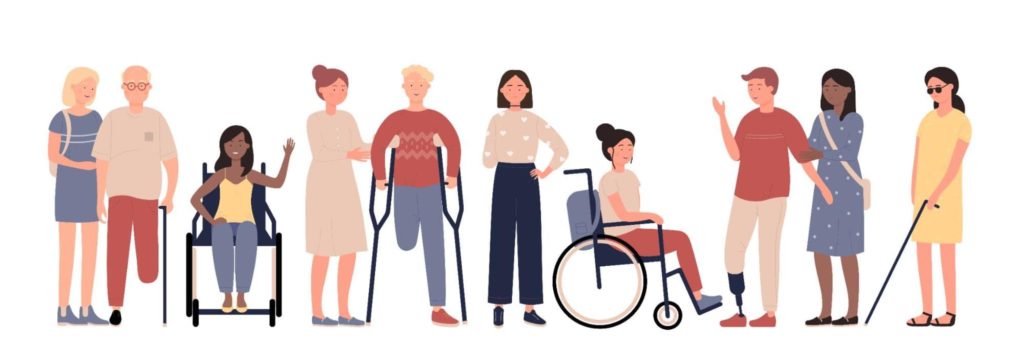Welfare Schemes for Vulnerable Sections of the population by the Centre and States and the Performance of these Schemes; Mechanisms, Laws, Institutions and Bodies constituted for the Protection and Betterment of these Vulnerable Sections
Discuss the Supreme Court’s instructions on how Persons with Disabilities (PwDs) should be portrayed in visual media on creating more accurate and respectful portrayals.
The Supreme Court of India has released historic guidelines aimed at preventing discrimination and stereotypes against people with disabilities (PwDs) in visual media. The framework places a strong emphasis on removing stigmatizing language, giving PWDs realistic representations, and including them in the creation of content. This verdict emphasizes a trend towards a human rights concept that sees PWDs as integral members of society with equal rights, building upon previous legislation such as the Rights of Persons with Disabilities Rules, 2017.
Article 41 of the Directive Principles of State Policy (DPSP) states that the State shall make effective provision for securing the right to work, to education and to public assistance in cases of unemployment, old age, sickness and disablement, within the limits of its economic capacity and development.
The Supreme Court’s nine-point instructions address a variety of topics with the goal of enhancing the portrayal of people with disabilities (PwDs) in the media:
- Model Emphasis: The human rights paradigm of disability, which expands and builds upon the social and medical models, was emphasized by the court. Whereas the social model sees disability as the result of societal constraints, the medical model largely considers disability through the prism of medical issues. The human rights approach, which forms the basis of this decision, states that people with disabilities (PwDs) are entitled to full participation in society and that disability is a component of human diversity.
- Obligations of Private Parties: The Supreme Court addressed what private organizations are required to do in accordance with the 2016 Rights of Persons with Disabilities Act. It acknowledged these duties but also acknowledged their limitations, as seen by its unwillingness to force Sony Pictures to produce awareness movies in compliance with the guidelines established in the Vikash Kumar v. UPSC case.
- Stereotypes and Discrimination: The decision made clear how stereotypes fuel prejudice against people with disabilities. Past instances such as Anuj Garg v. Union of India and Navtej Johar v. Union of India have shown how preconceptions pertaining to gender and other traits can result in indirect discrimination that is unlawful.
- Distinguishing between Cinematic and Hate Speech: The Supreme Court made a distinction between the two types of speech. It made clear that statements that propagate societal stereotypes and marginalize people based on their membership in a particular group are not acceptable uses of free speech protections. This makes sense when considering decisions like Pravasi Bhalai Sangathan v. Union of India.
Effects of the SC decision:
- The Supreme Court’s recommendations are intended to guarantee that PwDs be more appropriately and respectfully portrayed in movies.
- To promote a sympathetic portrayal of disability, the recommendations include cautious language use and contact with disability advocacy groups.
- In the upcoming years, the efficacy of these guidelines will be assessed.
Steps taken so far with respect to PWDs:
The law which comprehensively deals with disability rights is the Rights of Persons with Disabilities (RPwD) Act which came into force from April 19, 2017. The National Trust Act (1999), Rehabilitation Council of India Act (1992), Mental Health Care Act (2017) are the other laws that govern disability rights.
- Equitable access of offices to Divyangjans: The Court of Chief Commissioner of Persons with Disabilities mandated that any government office in the country that is not accessible to Divyangjan, must relocate their services to the ground floor or another accessible location for Divyangjans.
- Air travel access: The Court of Chief Commissioner of Persons with Disabilities emphasized that all airlines are responsible for implementing the provisions of the Rights of Persons with Disabilities Act 2016.
- The Rights of Persons with Disabilities Act, 2016 replaces the Persons with Disabilities (Equal Opportunities, Protection of Rights and Full Participation) Act, 1995 and this fulfils India’s obligations to the United National Convention on the Rights of Persons with Disabilities (UNCRPD), to which India is a signatory.
- PM-DAKSH (Divyang Skill Development and Rehabilitation Scheme): to make the skill development schemes accessible to the target groups – Backward Classes, Scheduled Castes and Safai Karamcharis.
- Accessible India Campaign: to enable Persons with disabilities to gain universal access, equal opportunity for development.
- DeenDayal Disabled Rehabilitation Scheme: To create an enabling environment to ensure equal opportunities, equity, social justice and empowerment of persons with disabilities.
- Assistance to Disabled Persons for Purchase/fitting of Aids and Appliances: It aims at helping the disabled persons by bringing suitable, durable, scientifically-manufactured, modern, standard aids and appliances within their reach
- National Fellowship for Students with Disabilities: It aims to increase opportunities for students with disabilities for pursuing higher education and grants 200 fellowships per year to students with disability.

